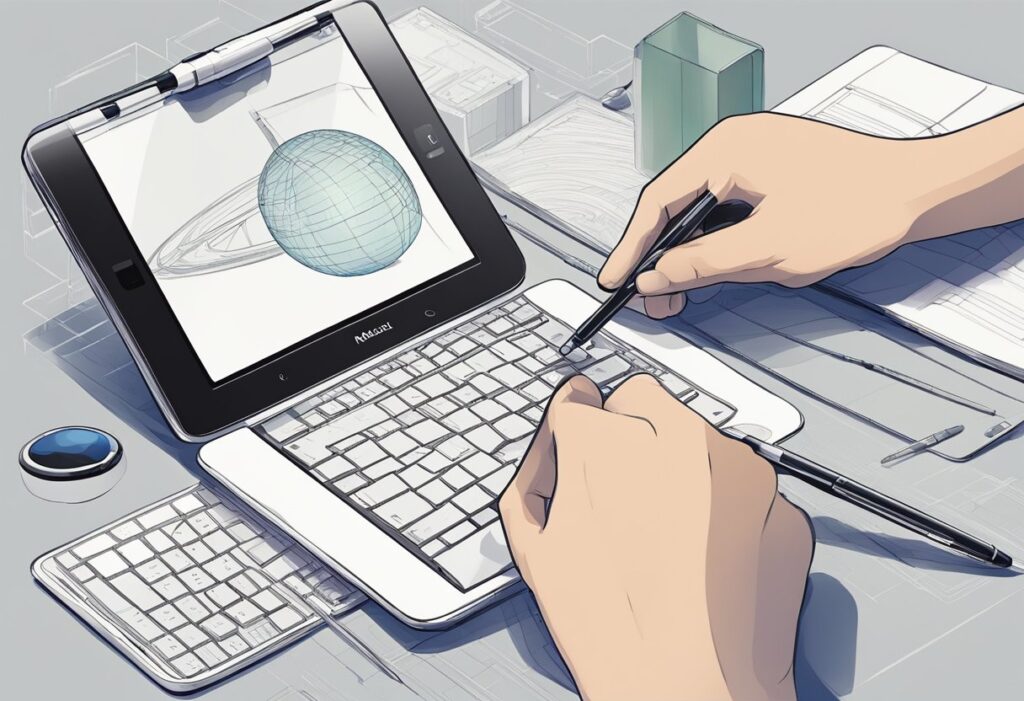Tablets have become an essential part of modern-day life, but their history is relatively short. The first tablet computer was the Dynabook, developed by Alan Kay in 1968. However, it wasn’t until the introduction of the Apple iPad in 2010 that tablets became mainstream. Since then, tablets have evolved significantly, with manufacturers experimenting with various sizes and designs to find the perfect one.
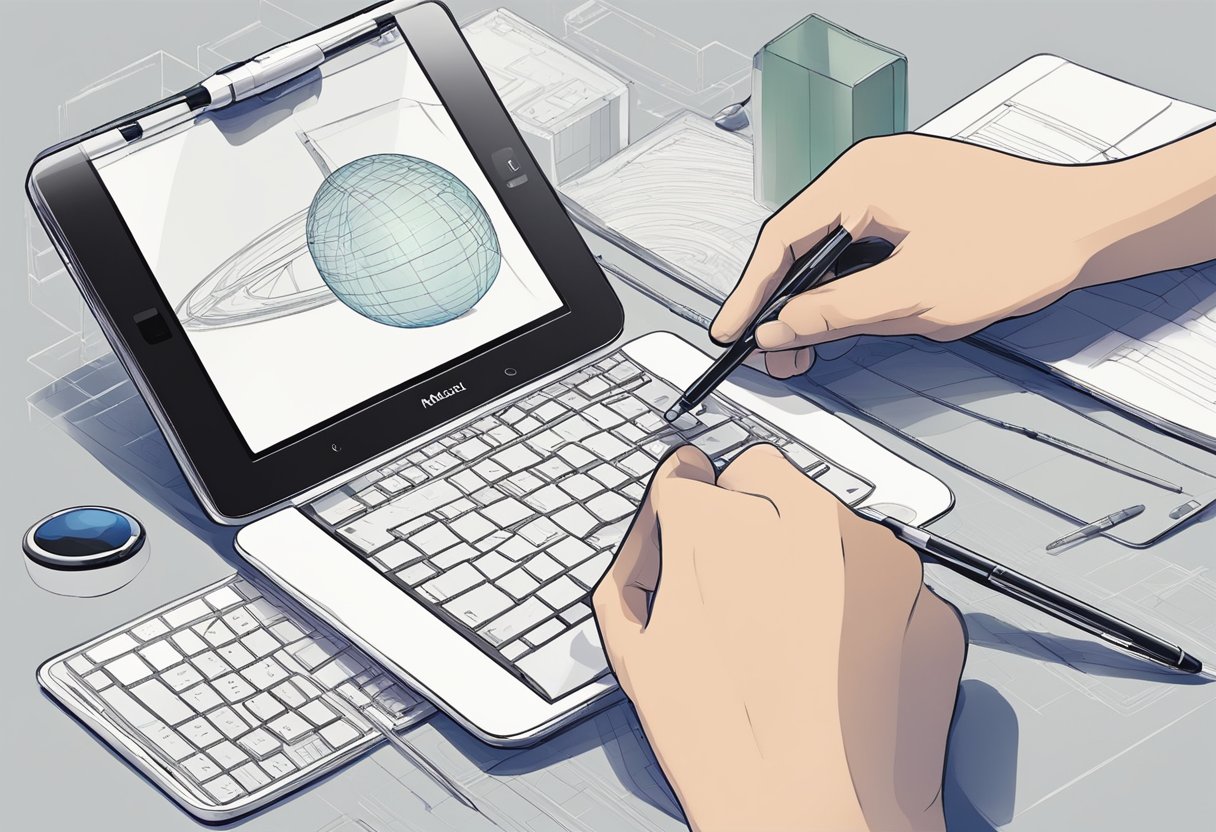
The evolution of tablets has been driven by the need for portability and convenience. Initially, tablets were designed to be a mobile alternative to laptops, but they have since evolved to become much more than that. Today’s tablets are thinner, lighter, and more powerful than ever before, making them ideal for a wide range of tasks, from browsing the web to editing documents and playing games. Additionally, many tablets now come with detachable keyboards, blurring the line between tablets and laptops.
The Genesis of Tablets
https://www.youtube.com/watch?v=PutFIbxwSss&embed=true
The concept of a portable, touch-sensitive computing device can be traced back to the early 1960s when visionary computer scientist Alan Kay envisioned a device resembling what we now call a tablet. Kay was inspired by science fiction, particularly the movie “2001: A Space Odyssey,” which depicted a handheld device used by the characters to browse information. Kay’s vision was to create a device that could be carried around and used for learning, communication, and entertainment.
In the early 1970s, Kay began working on a project called the Dynabook, which was a prototype of a portable computer that was easy to use and could be used by children for learning. The Dynabook was a precursor to the tablet, as it had a touch-sensitive screen and was small enough to be carried around.
In the 1980s, Microsoft released MS-DOS, which was the first operating system that could run on portable computers. This led to the development of the first handheld computer, the Atari Portfolio, which was released in 1989. However, it was not until the 1990s that the first true tablet, the Apple Newton, was released. The Newton was a handheld device that could be used for note-taking, email, and other tasks.
In the early 2000s, Motorola released the first tablet with a touch-sensitive screen, the A1000. This device was powered by ARM processors, which are now commonly used in smartphones and tablets. The A1000 was followed by a number of other tablets, including the HP Compaq TC1000 and the Fujitsu Stylistic ST4110.
Science fiction also played a role in the development of tablets. In the “Star Trek” series, characters used handheld devices called tricorders to scan objects and gather information. In Isaac Asimov’s “Foundation” series, characters used a device called a newspad, which was a portable computer that could be used for reading and writing. In Douglas Adams’ “Hitchhiker’s Guide to the Galaxy,” characters used a device called a “sub-etha sens-o-matic,” which was a portable computer that could be used for communication.
In 2010, Apple released the iPad, which was the first tablet to achieve widespread popularity. The iPad was followed by a number of other tablets, including the Samsung Galaxy Tab and the Amazon Kindle Fire. Today, tablets are used for a wide range of tasks, including browsing the internet, watching videos, reading books, and playing games.
Early Innovations and Designs
https://www.youtube.com/watch?v=IKLVSxhkZeg&embed=true
The history of tablet computers dates back to the 1980s, where early innovations and designs were introduced. One of the first tablet computers was the Pencept PenPad, released in 1982. It was a portable computer that used a stylus for input and featured handwriting recognition technology.
In the mid-1980s, Grid Systems Corporation introduced the GridPad, which was a pen-based tablet computer that ran on MS-DOS. It was primarily used for data collection and fieldwork. Following the GridPad, the Compaq Concerto, released in 1993, was one of the first convertible tablet computers that allowed users to switch between laptop and tablet modes.
In 1993, Apple introduced the Newton MessagePad, which was a personal digital assistant (PDA) that featured handwriting recognition and a touch screen. However, the device was bulky and expensive, and it was eventually discontinued in 1998.
In the late 1990s, Microsoft introduced the Windows XP Tablet PC Edition, which was a version of Windows XP designed for tablet computers. This allowed for better integration with the Windows ecosystem and paved the way for future tablet devices.
In 2000, the Pocket PC 2000 was released, which was a handheld device that featured a touch screen and stylus input. It was primarily used for personal information management and media consumption.
In the early 2000s, tablet computers began to evolve into more powerful devices. The Ultra-Mobile PC (UMPC), introduced in 2006, was a small, lightweight tablet computer that ran on Windows XP and featured a touch screen and stylus input.
In 2010, the iPad was introduced, which revolutionized the tablet market. It was a sleek, touch-based device that was primarily used for media consumption and web browsing. This led to the rise of hybrid devices, which combined the functionality of a laptop and a tablet.
Today, tablet computers continue to evolve, with devices featuring more powerful hardware and advanced features such as stylus input and handwriting recognition. Companies such as Wacom and Intel continue to push the boundaries of tablet technology with new innovations and designs.
Major Players and Products
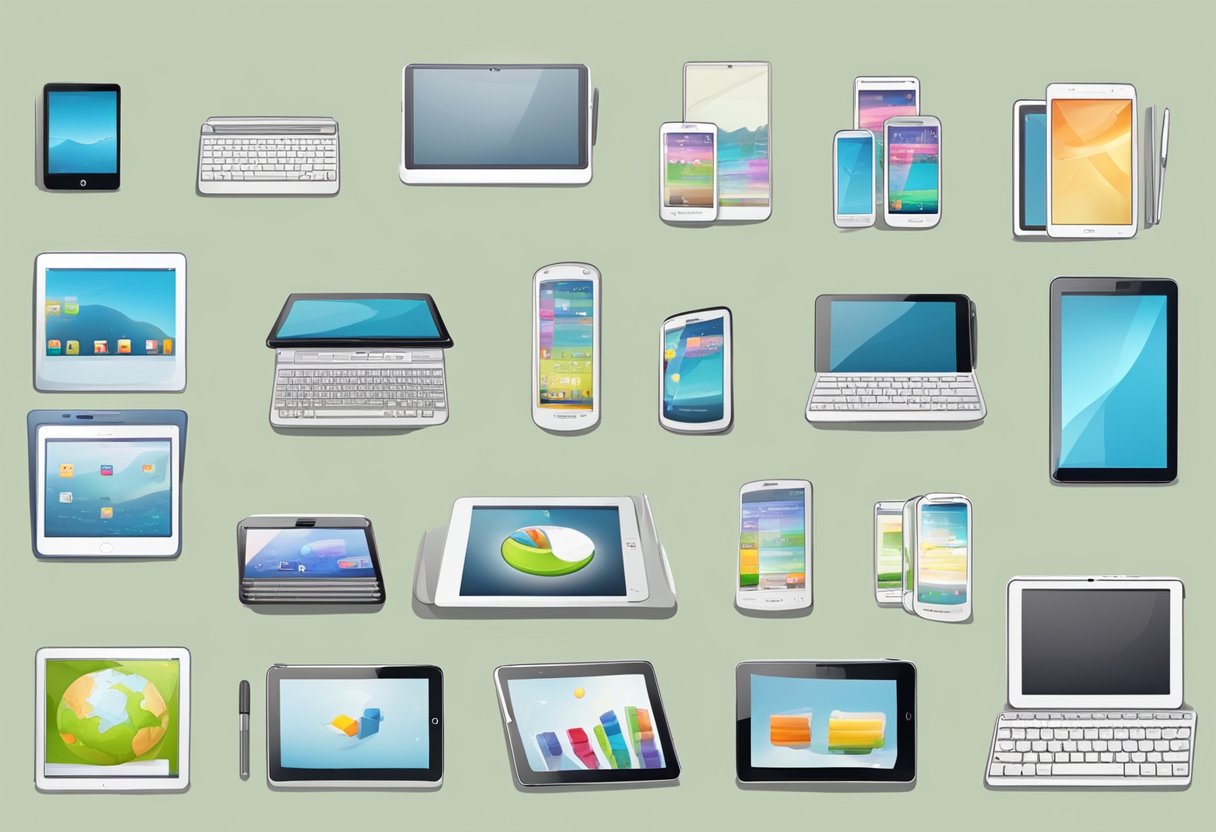
When it comes to the evolution of tablets, several major players have contributed to the development of this technology. Here are some of the most notable:
Apple’s Contributions
Apple has played a significant role in the evolution of tablets. The company’s first foray into the tablet market was the Apple MessagePad, which was released in 1993. However, it wasn’t until the launch of the iPad in 2010 that Apple truly revolutionized the tablet market. The iPad quickly became the most popular tablet on the market, and it helped to establish the tablet as a mainstream device.
Since the launch of the original iPad, Apple has continued to innovate and improve its tablet lineup. The company has released several new iPad models, including the iPad Pro, which is designed for professionals and power users.
Microsoft’s Innovations
Microsoft has also played a significant role in the evolution of tablets. The company’s first tablet PC was released in 2002, and it ran on Windows XP Tablet PC Edition. However, it wasn’t until the launch of the Microsoft Surface in 2012 that Microsoft truly established itself as a major player in the tablet market.
The Microsoft Surface is a hybrid device that combines the functionality of a tablet with the power of a laptop. The device has been well-received by consumers and professionals alike, and it has helped to establish Microsoft as a major player in the tablet market.
Samsung’s Role
Samsung has also been a major player in the tablet market. The company’s first tablet, the Galaxy Tab, was released in 2010, shortly after the launch of the iPad. Since then, Samsung has released several new Galaxy Tab models, including the Galaxy Tab S7, which is designed for professionals and power users.
Other Notable Manufacturers
Other notable manufacturers that have contributed to the evolution of tablets include Fujitsu, BlackBerry, Kindle, Motorola Xoom, Amazon Kindle Fire, IBM, Palm Pilot, Sharp, Toshiba, HP, Acer, and Motion Computing. While these companies may not be as well-known as Apple, Microsoft, or Samsung, they have all played a role in the development of tablet technology.
Overall, the evolution of tablets has been driven by a combination of technological innovation and consumer demand. As technology continues to advance, it will be interesting to see how tablets continue to evolve and shape the way we work and play.
Evolution of Tablet Design and Specifications
https://www.youtube.com/watch?v=IWR-vY603kk&embed=true
Tablets have come a long way since their inception, both in terms of design and specifications. Initially, tablets were bulky and lacked the sleekness and portability of modern-day tablets. However, over the years, manufacturers have made significant strides in tablet design, making them thinner, lighter, and more powerful.
One of the most significant changes in tablet design has been the size. Early tablets were often large and clunky, making them difficult to use on the go. However, as technology improved, manufacturers were able to create smaller and more compact tablets, making them more portable and user-friendly.
In terms of tablet computing, early tablets were often limited in their capabilities. However, as technology improved, tablets became more powerful, offering users the ability to run complex applications and perform a wide range of tasks. Today, tablets are often used as a replacement for traditional laptops, making them an essential tool for both personal and professional use.
Another significant development in tablet design has been the ability to recognize handwritten characters and handwriting motion. This technology has made tablets an ideal tool for artists, designers, and anyone who needs to take notes or sketch ideas on the go.
Finally, tablet color has also evolved over the years. Initially, tablets were only available in black and white. However, as technology improved, manufacturers were able to offer tablets in a wide range of colors, allowing users to choose a tablet that matches their personal style.
Overall, the evolution of tablet design and specifications has been significant. Today’s tablets are thinner, lighter, and more powerful than ever before, making them an essential tool for anyone who needs to stay connected and productive on the go.
Tablets in Popular Culture and Media
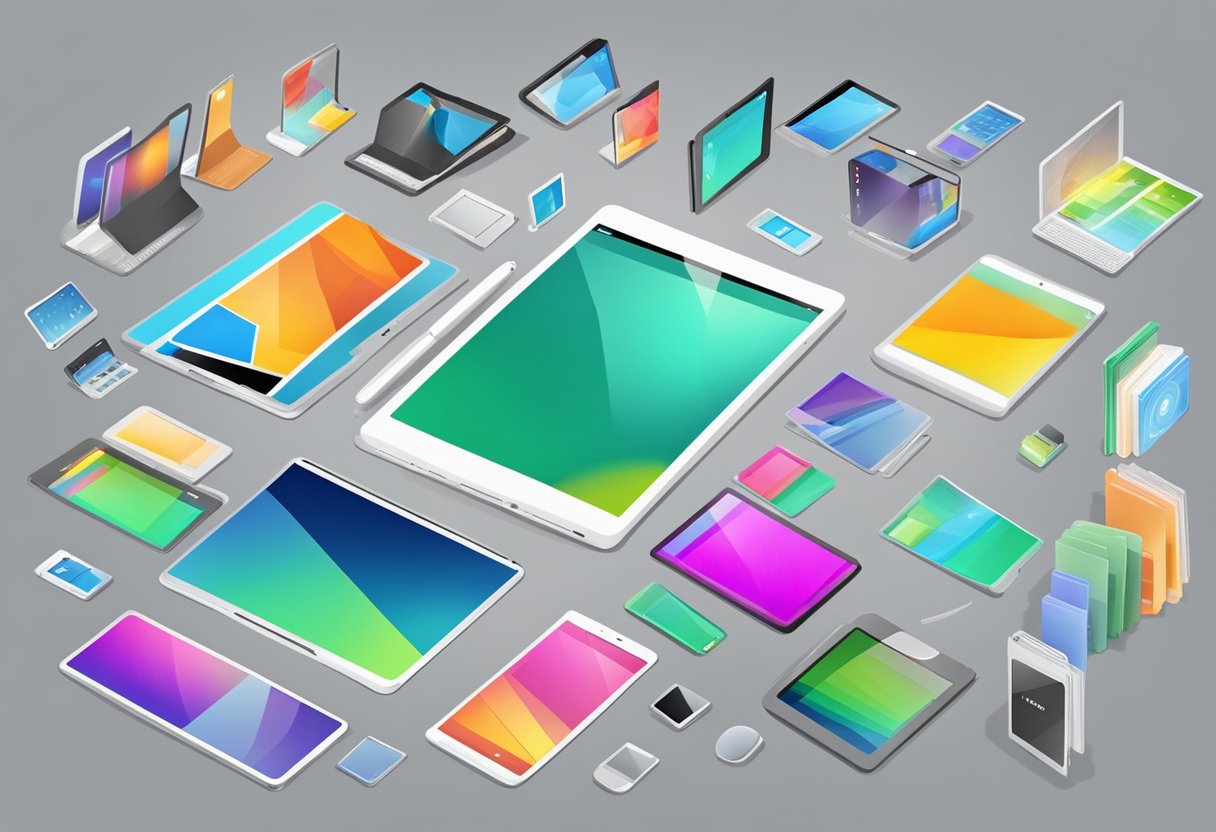
Tablets have been a staple of science fiction for decades, appearing in films, television shows, and novels. One of the earliest and most iconic depictions of a tablet was in Stanley Kubrick’s 1968 film “2001: A Space Odyssey,” which featured a device called the “Newspad.” The Newspad was a handheld device that allowed astronauts to read news and other information while in space.
Another popular science fiction franchise that prominently featured tablets was “Star Trek.” In the original series, characters used devices called “PADDs” (Personal Access Display Devices) to access information and communicate with others. The PADDs were later updated in the spin-off series, “Star Trek: The Next Generation,” to include touchscreens and more advanced features.
Isaac Asimov’s “Foundation” series, which was first published in the 1950s, also featured a device similar to a tablet called the “Prime Radiant.” The Prime Radiant was a tool used by the characters to analyze data and make predictions about the future.
Douglas Adams’ “Hitchhiker’s Guide to the Galaxy” series also included a tablet-like device called the “Electronic Thumb.” The Electronic Thumb was a small device that allowed characters to travel through space by hitchhiking on passing spacecraft.
Arthur C. Clarke, who co-wrote the screenplay for “2001: A Space Odyssey,” also predicted the rise of tablet computers in his 1979 novel “The Fountains of Paradise.” In the novel, characters used handheld devices called “Personal Communicators” to access information and communicate with others.
Overall, the portrayal of tablets in popular culture and media has helped to shape the public’s perception of these devices. From science fiction to real life, tablets have become an integral part of our daily lives, allowing us to access information, communicate with others, and stay connected no matter where we are.
Impact on Education and Productivity
https://www.youtube.com/watch?v=fXNc9LHix1A&embed=true
Tablets have made a significant impact on education and productivity since their introduction. With the fast evolution of present educational methods, technology has had a noteworthy influence on schooling and learning procedures. Technology in education plays an important position in all levels of teaching, owing to an upsurge in the usage of tablets for education to expand teaching strategies to meet the 21st-century student’s requirements [1].
Tablets have become an essential tool for students, teachers, and administrators alike. They provide a portable, lightweight, and versatile option for learning and productivity. Tablets have enabled students to access educational materials and resources from anywhere and at any time. Instructors can use tablets to create interactive and engaging lessons that cater to different learning styles. Moreover, tablets have the potential to improve student engagement, motivation, and achievement [2].
Tablets have also helped to increase productivity in various industries. They provide users with a convenient and portable option for working on the go. Tablets have become a popular choice for professionals who need to access emails, documents, and other work-related materials while traveling or away from their desk. Tablets have also enabled employees to collaborate more effectively by providing a platform for sharing and editing documents in real-time [3].
Innovation in tablet technology has also led to the development of various educational and productivity apps. These apps provide users with tools for note-taking, time management, document editing, and more. They have helped to streamline workflows and increase efficiency in various industries. Moreover, tablets have enabled users to stay connected with colleagues, clients, and customers through video conferencing and other communication tools [4].
Overall, tablets have had a significant impact on education and productivity. They have provided users with a portable, versatile, and convenient option for learning and working. Tablets have also enabled innovation in various industries, leading to the development of new apps and tools that have helped to streamline workflows and increase efficiency.
[1] Using Tablet on Education – ERIC
[2] The Evolution Of Technology In The Classroom | EdTech Magazine
[3] The Evolution Of Technology In The Classroom | Purdue Online
[4] 5 advantages of using tablets in digital learning
Future of Tablets
https://www.youtube.com/watch?v=99l1YR3DhCo&embed=true
Tablets have come a long way since their inception, and their future looks bright. With the constant evolution of technology, tablets are set to become even more useful and adaptable in the coming years.
One of the biggest developments in the future of tablets is the integration of more ports. Many tablets currently lack ports, making it difficult to connect external devices. However, newer models are expected to have more ports, making them more versatile and user-friendly.
Another trend that is expected to continue in the future of tablets is the hybridization of tablets and laptop computers. This trend has already begun, with devices like the iPad Pro and Microsoft Surface Pro blurring the line between tablets and laptops. This hybridization allows users to enjoy the portability of a tablet while also having the functionality of a laptop.
In addition to hybridization, the future of tablets is likely to include more powerful processors, allowing them to handle more complex tasks. This will make them more attractive to professionals who need to use their tablets for work.
The future of tablets may also include the incorporation of e-ink technology, similar to what is found in e-readers. This technology would allow for a more paper-like reading experience and could make tablets more appealing to book lovers.
Overall, the future of tablets looks bright. While they may not replace laptops or mobile phones entirely, they will continue to evolve and become even more useful and adaptable.
Frequently Asked Questions
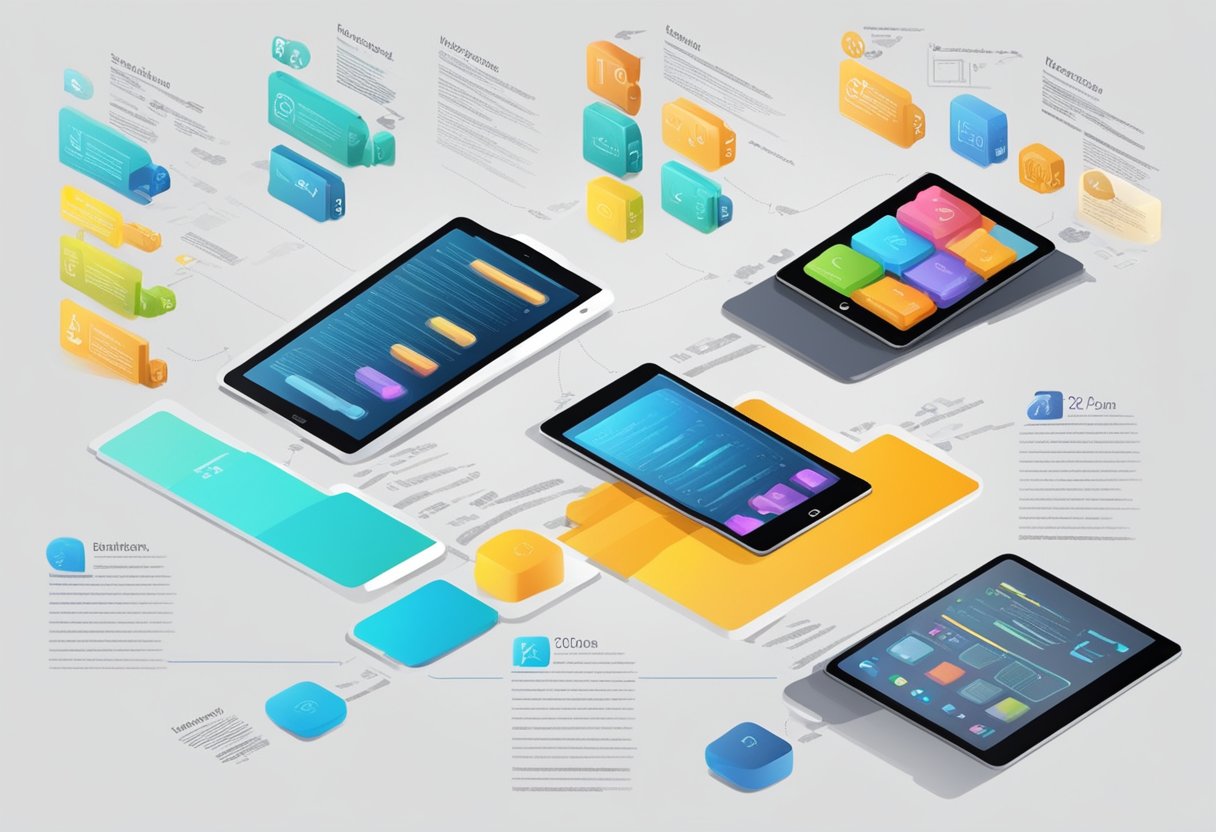
When did the first tablets appear?
The first tablets appeared in the early 2000s. However, the concept of a portable computing device with a touch screen interface dates back to the 1960s. It was not until the development of mobile operating systems and advancements in touch screen technology that tablets became a viable product for consumers.
What did the first tablet look like?
The first tablet, the GRiDPad, was a bulky device with a monochrome display and a stylus for input. It was not until the release of the Apple iPad in 2010 that tablets became sleek and stylish devices with multi-touch displays and intuitive interfaces.
What is the brief history of tablet computers?
Tablets have come a long way since their inception. In the early days, they were primarily used for niche applications such as data collection and field work. With the release of the iPad in 2010, tablets became mainstream consumer devices. Since then, tablets have continued to evolve, with new features such as detachable keyboards, stylus input, and 2-in-1 designs.
What year did tablets become popular?
Tablets became popular with the release of the Apple iPad in 2010. The iPad was a game-changer, offering a sleek design, intuitive interface, and access to a vast library of apps. Since then, tablets have become a common sight in households and businesses around the world.
Are tablets making a comeback?
While tablet sales have declined in recent years, there are signs that tablets may be making a comeback. Manufacturers are releasing new models with innovative features such as foldable displays and 5G connectivity. Additionally, the COVID-19 pandemic has increased demand for tablets as people work and study from home.
What is a tablet?
A tablet is a portable computing device with a touch screen interface. It typically features a large, high-resolution display, a long battery life, and access to a wide range of apps. Tablets are designed for entertainment, productivity, and communication, and are popular with consumers and businesses alike.

